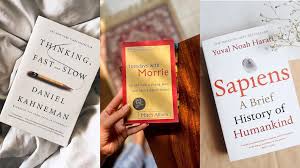Table of Contents
- Introduction to Hardcover Books
- Why Choose Hardcover Books
- Historical Significance of Hardcover Books
- Hardcover Books in Modern Times
- Benefits of Collecting Hardcover Books
- How to Maintain and Care for Hardcover Books
- Conclusion
Introduction to Hardcover Books
Hardcover books have stood the test of time, offering readers a durable and aesthetically pleasing alternative to their paperback counterparts. The process of hardcover book printing involves meticulous craftsmanship, resulting in volumes that are not only functional but also beautiful. These books are treasured keepsakes, often passed down through generations, signifying their enduring value. Their construction includes robust spines and rigid covers, which protect the delicate pages and ensure a longer lifespan than paperback editions.
Hardcover books are popular among avid readers and collectors. Their robust construction and timeless appeal make them a preferred choice for many. Hardcover books exude a sense of grandeur and permanence, unlike their paperback counterparts. This sense of permanence is crucial for those who view books as vessels of information and cherished artifacts worthy of preservation.
Why Choose Hardcover Books
Many readers prefer hardcover books for their durability and timeless appeal. Unlike paperbacks, which can quickly become damaged, hardcover books are constructed to withstand the wear and tear of time. Additionally, their beautiful design makes them perfect for display on bookshelves. A well-crafted hardcover book becomes a centerpiece in any home library. The elegant spines and covers provide a more immersive and delightful reading experience, making each session a special occasion.
A hardcover book remains pristine for longer, making it a wise investment for those who cherish reading materials. The robust binding allows the book to lie flat, facilitating an uninterrupted and comfortable reading session. This is particularly beneficial for reference books, cookbooks, and any other frequently used book. Readers find that the tactile experience of turning thick, well-bound pages enhances their connection to the content, making reading even more gratifying.
Significance of Hardcover Books
Hardcover books have a rich history dating back centuries. They were once the primary format for publishing essential texts and manuscripts. The craftsmanship involved in their production was considered an art form, with skilled artisans meticulously binding each volume by hand. This tradition of quality craftsmanship continues today, preserving the heritage of hardcover books. Each book was a labor of love, often featuring elaborate covers adorned with gold leaf, embossed titles, and intricate illustrations that reflected the period’s artistic sensibilities.
Historically, hardcover books were symbols of knowledge and prestige. Libraries and private collectors sought these meticulously crafted books, recognizing their value and durability. The historical importance appeals to contemporary hardcover books, linking readers to a long-standing custom. When you hold a hardcover book, you can feel its historical background and imagine the many people who have touched it, thus adding to its worth and importance.
Hardcover Books in Modern Times
In today’s digital age, you might wonder about the relevance of hardcover books. Surprisingly, they remain popular among readers for their tangible, tactile experience. The demand for physical books, particularly hardcovers, has seen a resurgence despite the rise of e-books. This enduring appeal underscores the unique attributes that only hardcover books can offer. Readers still value the sensory experience of a physical book—the weight, the feel of the paper, the sound of turning pages.
Modern technology has also improved the availability of hardcover books, ensuring quality remains uncompromised. This combination of traditional methods and new ideas guarantees that physical books continue to capture and delight readers of all generations. Print-on-demand services have democratized publishing, allowing authors to create high-quality hardcover editions easily. This has led to a diverse and vibrant market where readers can find beautifully crafted books on various subjects.
Benefits of Collecting Hardcover Books
- Longevity: Hardcover books are built to last, making them ideal for collectors.
- Aesthetic Value: Their attractive design and sturdy build make them perfect for display.
- Investment: Certain editions, mainly first and limited prints, can increase in value. The book’s rarity and condition can significantly influence its market value.
- Emotional Connection: Many collectors enjoy the sentimental value of holding a beautifully bound book. The tangible nature of hardcover books often evokes memories and emotions tied to the moments spent reading them or the occasions they commemorate.
How to Maintain and Care for Hardcover Books
- Store Properly: Keep your books upright on a bookshelf, away from direct sunlight and moisture. Excessive exposure to UV rays can fade the covers and spine, while humidity can cause mildew and warping.
- Handle with Care: Avoid bending the spines or dog-earing pages to maintain their pristine condition. Always handle books with clean hands to prevent oils and dirt from tarnishing the pages.
- Dust Regularly: Use a soft cloth to dust gently from the covers and edges. Prevent dust from accumulating on your books to maintain their appearance and avoid allergens.
- Use Book Covers: Protective covers can help shield your books from damage and wear. Consider using archival-quality dust jackets if the original covers are particularly valuable or delicate.
Conclusion
The enduring legacy of hardcover books is a testament to their quality, durability, and timeless appeal. Whether you’re a seasoned collector or a casual reader, hardcover books offer a unique and cherished reading experience. Their rich history and the continued craftsmanship in their production ensure they will remain a beloved format for generations to come. The art of hardcover book printing continues to evolve, blending modern techniques with traditional practices to create books that are as durable as beautiful. This harmonious blend of past and present guarantees that hardcover books will always have a special place in the hearts of readers and collectors alike.

